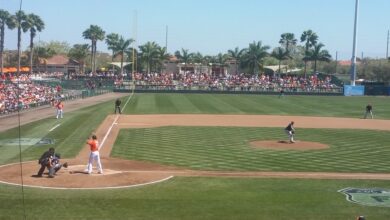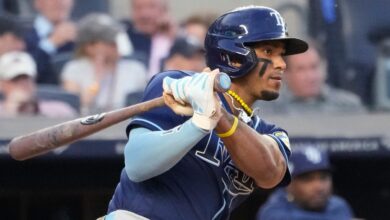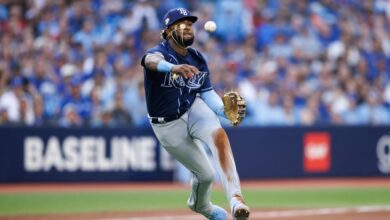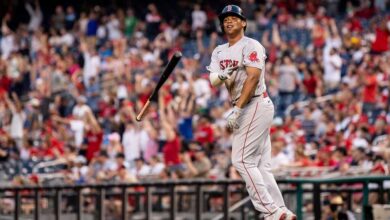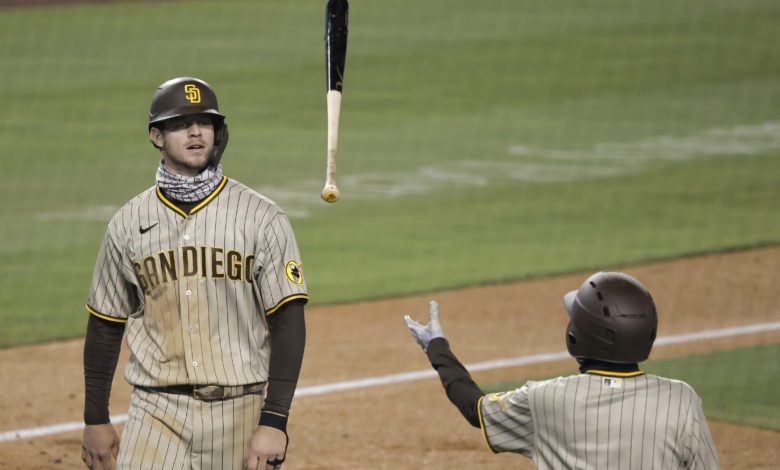
San Diego has pulled off a miracle.
No, they haven’t won the World Series. No, they aren’t even leading their division. The miracle of the Padres is how they’ve capitalized on a timely youth movement while spending $43.5 million on two players who combine for 1.3 bWAR.
The Padres are an exercise in perfect timing. They went on a free agent splurge only a year or two before a surge of prospects hit their MLB roster. They pay most of their top WAR producers far less than they’d get on the open market. Their third-best producer, Jake Cronenworth (4.1 bWAR), earns a measly $584,900 this season. Their fourth-best, Trent Grisham (2.3 bWAR), makes $589,200. Oh, and their All-World starting shortstop doesn’t even cost $2 million.
The team is maximizing the time they have while these young stars play on cheap contracts. It won’t last forever, though. The Padres are barely under the luxury tax threshold as-is, and most of their top players will enter arbitration starting this winter. This period will expose one weakness of the Padres roster: the contracts of Will Myers and Eric Hosmer.
Sizing the Salary Situation
This is not to say Myers and Hosmer are bad players. They each have positive bWAR values, and they aren’t glaring weaknesses. The issue comes with their cost. Will Myers produces a measly 0.6 bWAR but commands the second-highest salary on the team ($22.5 million). Hosmer is also underperforming: he costs $21 million, yet he has produced the 12th-most bWAR of any Padres player (0.7).
This season is hardly an outlier for Hosmer, either. The simple truth is the Padres bought high on him. They signed him to an eight-year contract the season after he won a Gold Glove and finished 14th in AL MVP voting. Since then, he hasn’t cracked two bWAR in a season. In 2019, he actually finished with -0.5 bWAR, hitting .265 through 160 games. Last year was encouraging, as he produced 1.3 bWAR with a .287 batting average in only 38 games. But this season has been another regression.
The Padres have recently made the situation more confusing, too. With the acquisition of Adam Frazier, they can now toy with lineups where Frazier starts at second and Cronenworth moves to first. San Diego debuted this lineup against Oakland and employed it again against Colorado. They could keep Frazier in left field, but if they like him in the infield, this will reduce Hosmer’s production even further. Frazier has a year of arbitration remaining on his contract, meaning this could be the first of two seasons where the team pays Hosmer more than $20 million to start only a handful of games.
Myers is a bit more confusing. Like Hosmer, he saw a spike in production last year, jumping from -0.4 bWAR in 2019 to 1.8 in 2020. Also, like Hosmer, he was quite productive in the years prior, and Myers’ production was more stable than Hosmer’s. Still, he seems like a typical replacement player this season. Through 97 games played, he’s batting only .256.
Relative Urgency
Their contracts pose no current problem because San Diego has stuck salary gold elsewhere. Plus, it helps that the Padres possess quality players across their roster. But the time will come to pay these players, and it will be hard to solve the Hosmer and Myers situations then. Both players are under contract next season, and both are on the wrong side of 30. To make matters more difficult, Hosmer has player options in 2023, 2024, and 2025.
Myers has a club option for 2023, so unless his production picks up, the Padres can simply let him go. It will still hurt to pay him next year, but if the Padres maneuver their salaries, maybe they can handle it for a season. The Padres would have to replace Myers in the outfield, though the recent acquisition of Jake Marisnick might be a step in that direction. The Padres have used Jurickson Profar in right field, but he hasn’t performed much better.
Hosmer is much more challenging. Unless he believes he can find a better contract as a free agent, which seems highly unlikely, he’ll accept all three player options. By then, his contract will be an albatross. The Padres won’t be able to pay so much money for replacement-level production. His player options are only for $13 million while he currently earns $21 million (and will earn $21 million again in 2022). So, it won’t be as bad, but $13 million is still not ideal, especially as Hosmer ages.
Hosmer is also set to gain “10-and-five rights” in 2023. Because he has played in the league for 10 years and played specifically for the Padres for five, he gains the ability to decline any trade proposal involving him. This will curtail his market even further. In fact, Hosmer already has a 10-team no-trade list, so teams like the Indians and Orioles are reportedly off-limits.
Potential Solutions
This problem wasn’t urgent enough to address at the July deadline. But this is a topic to follow over the offseason. Where could either player go? It’s hard to say. Each is still a positive producer – just not by a lot. Ideally, the team would move them to a club with plenty of salary room. They will likely need to surrender assets to accomplish this. The Marlins seem like a candidate, though Hosmer would play quite rarely behind Jesus Aguilar. It also seems possible to dump their salaries in the NL West. Both the Rockies and the Diamondbacks have at least $91 million in space beneath the luxury tax threshold. Maybe they could find a role for Hosmer or Myers to play, too.
Suppose these teams are willing to take on either player. The next challenge is giving them a tempting trade package. This situation is similar to a typical NBA case where a team might send a big-contract player along with a high draft pick. Could the Padres do this? A likelier option is sending Hosmer/Myers and a solid prospect in exchange for another young, less-promising prospect. San Diego would assuredly need to send cash in the trade, too.
This is much less important if the Padres are willing to exceed the luxury tax threshold. Such a move would hurt long-term, as this offseason will be the first of many where key players receive raises. It’s worth wondering: is this a wise move? Suppose the Padres are willing to be super-spenders. What do they gain? Are Hosmer and Myers worth so much money?
It’s unclear if the Padres could entice another team to take on either contract. But they should certainly try.


